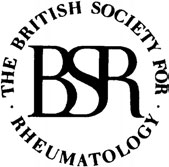samverkanvg.se
REKLISTAN 2010 75 rEKommENdErAd FySISK AKtIvItEt vId ArtroS, LåNGvArIG SmÄrtA uNS och FIbromyALGI ArtroS Träningen bör inledningsvis ske som anpassad träning under ledning av sjukgymnast. Styrketräning kompletterad med rörlighet, balans och koordinationsfrämjande träning bör vara individuellt avpassad och ske 3 gånger/v. Konditionsfrämjande träning av mått-lig intensi
 BSR guidelines for prescribing TNF-a blockersin adults with ankylosing spondylitis. Report of aworking party of the British Societyfor Rheumatology
A. Keat, N. Barkham1, A. Bhalla2, K. Gaffney3, H. Marzo-Ortega1,S. Paul4, F. Rogers5, M. Somerville3, R. Sturrock6 and P. Wordsworth7on behalf of the BSR Standards, Guidelines and Audit Working Group
Two TNF-blocking drugs are now licensed for the treatment of
the prevalence of AS ranges from 0.05 [3] to 0.23% [4] in adults,
ankylosing spondylitis (AS) and there is clear evidence of
men being affected 3–4 times more frequently than women, and
symptomatic efficacy. It is recognized that the instruments for
in Rochester, Minnesota, an annual incidence rate of 7.3 per
analysing aspects of AS and the outcomes of treatment are
100 000 person years has been calculated [5]. The prevalence of
imperfect, though they are validated and adequate for the purpose.
BSR guidelines for prescribing TNF-a blockersin adults with ankylosing spondylitis. Report of aworking party of the British Societyfor Rheumatology
A. Keat, N. Barkham1, A. Bhalla2, K. Gaffney3, H. Marzo-Ortega1,S. Paul4, F. Rogers5, M. Somerville3, R. Sturrock6 and P. Wordsworth7on behalf of the BSR Standards, Guidelines and Audit Working Group
Two TNF-blocking drugs are now licensed for the treatment of
the prevalence of AS ranges from 0.05 [3] to 0.23% [4] in adults,
ankylosing spondylitis (AS) and there is clear evidence of
men being affected 3–4 times more frequently than women, and
symptomatic efficacy. It is recognized that the instruments for
in Rochester, Minnesota, an annual incidence rate of 7.3 per
analysing aspects of AS and the outcomes of treatment are
100 000 person years has been calculated [5]. The prevalence of
imperfect, though they are validated and adequate for the purpose.